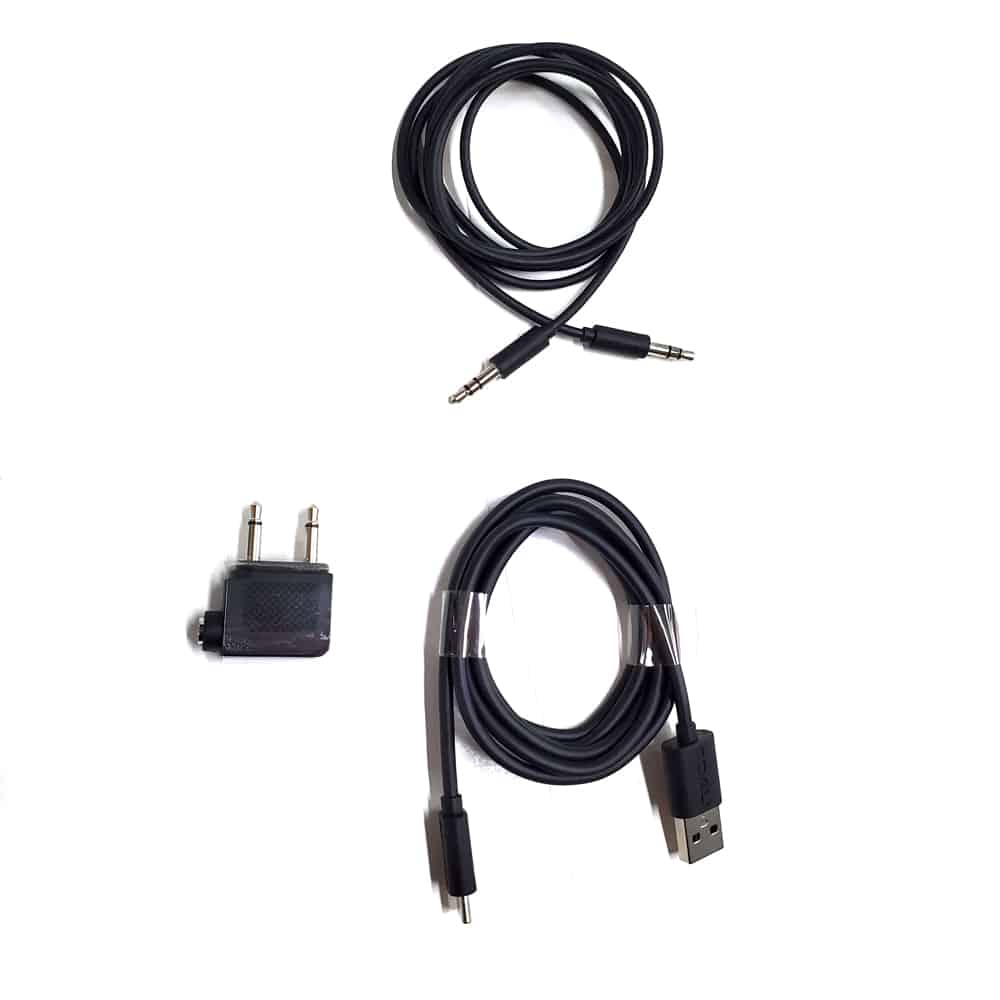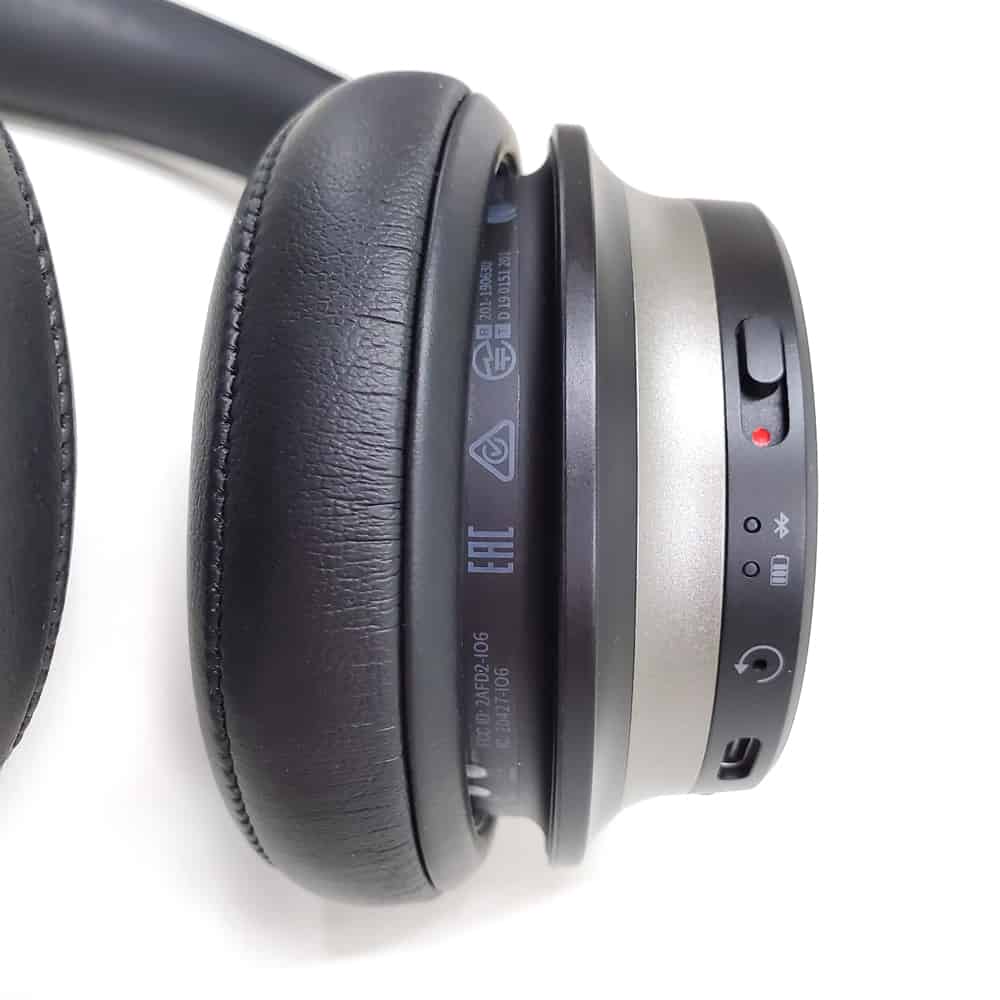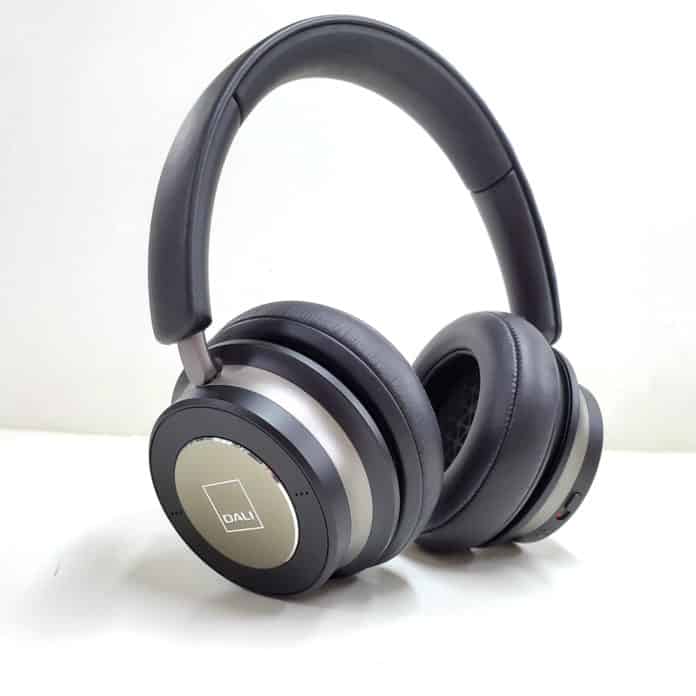This is my first time trying a pair of headphones from esteemed Danish speaker manufacturers Dali. That makes sense because the Dali IO-6 is one of the first pairs they’ve ever produced. It seems like a bold decision for a company that sells $20,000 speakers to enter the world of headphones with 50mm driver Bluetooth cans. As a result, I’m actually quite interested to give ’em a test drive.

Unboxing and Accessories
The packaging of the Dali iO-6 is a great first impression. Frequently, I find myself being tricked into tearing up boxes by manufactures who trap their products in endless labyrinths of nonsense origami. I don’t know if those manufactures see the added complexity as something luxurious, but I don’t.
Dali has taken the high road here and actually created a box with just a single flap that contains a clear and precise set of directions for use and functionality. Besides that, there’s a manual and a case. The case is semi hard and opens with a zipper and inside, and contains the headphones and all accessories inside. The quality of said case is excellent and the additional accessories are standard: charging cable, 3.5mm aux cable, and flight adapter.

Comfort
You really have to spend a second getting the headband length right in order to get the perfect fit, but afterwards it’s really comfortable. This is seen with any snug fitting headband: it’s imperative that the headband and earcups are equally distributing the pressure. I like this kind of fit due to how secure the result ends up feeling

Funcitonality: Controls
The Dali iO-6 uses physical buttons instead of the popular tough-gesture style controls that are commonly seen in competing models. I love it. I never thought a pair of headphones would be the catalyst in this realization, but I guess I’m getting older. The Qwerty keyboards seen on old Blackberrys are something I miss dearly. I like a physical and deliberate response that doesn’t have you playing guessing games. The volume and playback controls on the iO-6 are tactile and straightforward in this way.

Functionality: Noise-Canceling
The noise-canceling employed in the Dali iO-6 is lighter than other heavyweight ANC models, and that appeals to me. I’m not crazy about noise canceling, but I see it’s utility. The most effective noise-canceling headphones tend to bother me with the “pressure” feeling that many experience. Here’s where the iO-6 wins my heart with noise-canceling that isn’t trying break any records by silencing a rocket taking off four feet in front of you.
It should also be noted, I normally don’t like the way noise-canceling affects sound on most ANC cans. The Dali iO-6 sounds fantastic with it turned on. Perhaps they’ve planned the frequency response of the drivers to compensate for the balance changes experienced with ANC. Maybe it’s just due to the fact that they aren’t blasting the most powerful counter-wave in the world at you that it’s just easier to ignore. Either way, I really don’t hear any reduction in sound quality with this feature active.
Sound
The more I enjoy a pair of headphones, the harder I find it to review them in terms of sound. The criteria for what I personally enjoy is just a neutral balance and clarity. I thought I’d just mention as a disclaimer that this is going to be a case of that.
Highs
High frequencies are the the vanguard in the war of Bluetooth and sound quality. Streaming aptX from my Galaxy S10 Plus, I’m happy to report a peaceful resolution. The iO-6 has full detail, audibly extended to the very top without any peaks, dips, or trenches. They have a nice airy quality about them, and they feature outstanding detail. They are most revealing Noise-Canceling headphones I’ve ever heard.
Mids
Upper mids may be heard better than lower mids by an insignifcant degree. I’ll reconfirm that the balance of the drivers is pretty neutral, with nothing dramatically colored. That being said, if anything, the mids might be recessed ever so slightly in comparison to the outer ranges. The balance of the iO-6 is so evenly weighted that I wouldn’t put my reputation on this claim. Mids are totally clear, and vocals sit properly in their overall performance.
Lows
Bass is heard and felt. The Dali iO-6 has big drivers. It’s because of this that I’m convinced I can feel the drivers transmit bass not only through air, but through bone conduction on the contact of the ear cups. I’m not saying this was Dali’s intention, but there’s a largeness to the stage in the low range, and I’m suspicious that it’s because I’m receiving much of it from my head-bone.
Theories aside, low frequencies are reproduced with great separation and space through these cones. I don’t hear any distortion, and the lows have a beautiful richness to them without overpowering the mix. I don’t know for sure how extended they are, the bass isn’t very subby.

Sound: Final Thoughts
Stage is actually not terrible here. I feel comfortably spaced from the music with the ability to hear everything with a sense of excitement and absolute clarity. Instrument separation is outstanding, and imaging is top-notch.
I kept thinking the headphones had bad SNR but then I realized that they were just revealing the bad SNR of the tracks I was listening to. The headphones actually just do their job that well. They are potentially the most revealing Noise-Cancelling cans on the market.
Summary
I like the Dali iO-6 a lot. Astonishingly, their playback performance appears unaffected or possibly even improved by toggling on their noise canceling. This comes at a cost of their overall noise-canceling functionality, as it is certainly not the strongest on the market. For those of us who are sensitive to the pressure sensation of these kinds of headsets, that may not be such a bad thing.
Here’s where you can buy them:
Amazon
Audio46
Compare the ranking of various headphones, earbuds and in-ear monitors using our tools.
Discuss this, and much more, over on our forum.
---MAJORHIFI may receive commissions from retail offers.















